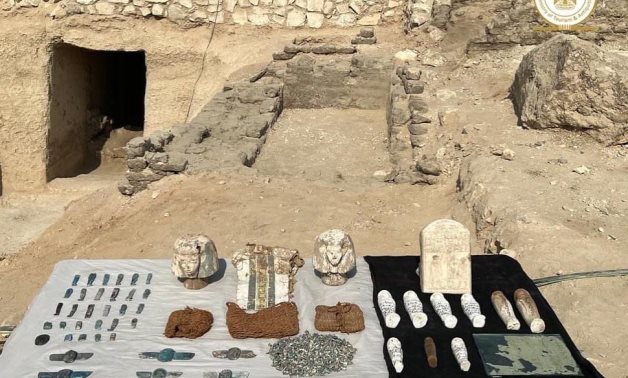
File: The first group of family burials from the Second Intermediate Period that were uncovered in west Luxor.
An Egyptian archaeological mission headed by the Secretary-General of the Supreme Council of Antiquities, in the Dra’ Abu al-Naga necropolis on Luxor’s West Bank has discovered the first group of family burials containing more than 30 shafts from the Second Intermediate Period.
A mud-brick building used in making offerings was also found, inside which was a collection of Ushabti statuettes, amulets, and hundreds of funerary seals.
On January 25, the Egyptian archaeological mission, headed by the Secretary-General of the Supreme Council of Antiquities Mostafa Waziry succeeded in uncovering a complete residential city from the Roman era, during their archaeological excavation in the Beit Yassi Andraos area, adjacent to the Luxor Temple on the eastern bank.
The Egyptian archaeological mission discovered a group of family burials from the era of the Thirteenth Dynasty of the Second Intermediate Period, during excavation work at the Dra’ Abu al-Naga cemetery on the western mainland in Luxor.
This important discovery shed the light on the most important ancient Egyptian city in the east bank of Luxor which was an extension of the ancient city Thebes.
During the archaeological excavations, the mission found a number of residential buildings, two piegon towers from the second and third centuries AD, and a number of workshops for the manufacture and smelting of metals, inside which were a number of pots, water bottles, flasks, pottery trays, grinding tools, and Roman copper and bronze coins.
During its previous excavation seasons, the mission found a number of amphorae, saddles, bronze coins and archaeological icons dating back to different historical eras.

Comments
Leave a Comment